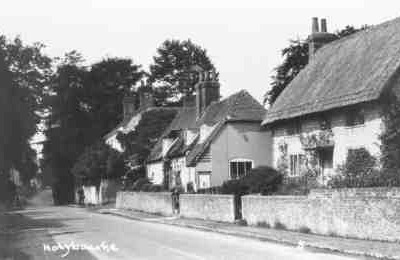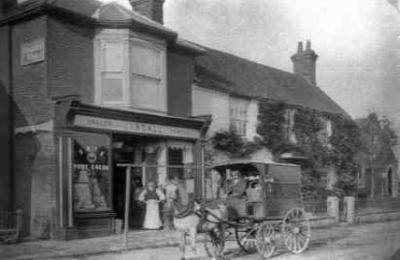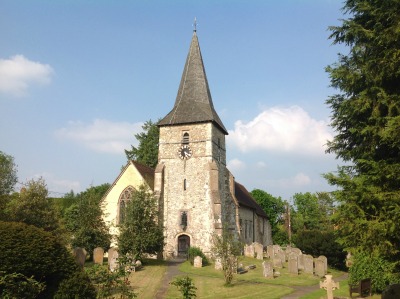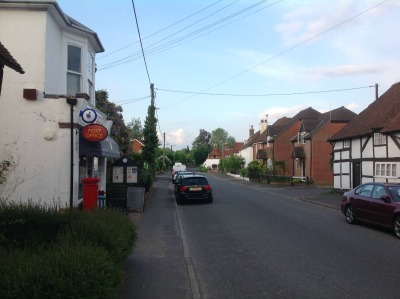
Holybourne – Old English ‘Haligburna’ = ‘sacred stream’
This village lies to the North East of Alton, near the possible site of the Roman posting station (Mansio) of Vindomi, believed to be at the crossing of two Roman roads – Winchester to London and Silchester to Chichester. Some say that the name Holybourne was derived from the fact that a fresh water spring is situated in the churchyard almost opposite the west door of the church. The spring and stream are now culverted for 30 to 40 yards to the village pond and is a tributary to the River Wey, just to the south of the village. Wild watercress can be found growing in the lower part of the stream.
In medieval times the area of Holybourne lay in three manors, Holybourne Eastbrook, Alton Westbrook and ‘Neatham’. Manor Farm was the demesne farm of the manor of Holybourne Eastbrook which also had holdings east and west of the brook. The large manor of Alton Westbrook included the tithing of Holybourne Westbrook as well as the tithing of Alton Westbrook and sub-manors of Kingsley, South Hey, Mill Court and Rotherfield. Neatham was a separate manor which had holdings in Holybourne and Binsted. It was not until 1579 under Robert White of Aldershot that Holybourne Eastbrook and Holybourne Westbrook came into the same hands. Neatham manor still held property in the area of Holybourne until the end of the manorial system in the early 1900s.



The village also stands on the old coaching road from London to Southampton, now mercifully by-passed, and is served well by the nearby market town of Alton which boasts two supermarkets, a range of shops and restaurants as well as a weekly market in the High St. While Holybourne still nestles quietly in the valley it continues to progress into the 21st century.
Over the last 30 years the population has steadily expanded from 500 to 1500 and Holybourne has moved from its position as a temporary ‘stopping place’ to that of an ideal commuter village while retaining its village identity and its sense of history.
Village life for many years has, and still is, centered on the church, the village shop with its Post Office, The White Hart and The Queens Head public houses, and the Village Hall.
Recreation for the younger generation may be found in the large playground. For others the village boasts a successful village cricket team, which plays near the old Roman settlement, and the amateur Holybourne Theatre. The Theatre originally started in a Nissen hut in the old German Prisoner of War camp during WWII.
For the more active, there is an extensive network of old footpaths that linked the local villages and farms running amongst the beautiful rolling fields and woodlands, which more often than not, still lead to another village and its local hostelry or hostelries!



Travel an hour away brings cities such as London, Winchester, Portsmouth and Southampton within reach. Portsmouth, with major attractions such as Admiral Nelson’s flagship, HMS Victory, Henry VIII’s flagship, the Mary Rose, and the Naval and Submarine museums. Winchester with its Cathedral and King Arthur’s ‘Round Table’ ( Henry VIII had it made!) and London, which needs no introduction!
In the immediate vicinity we find Jane Austen’s house, the Watercress Line which took its name from supplying London Hotels with fresh Watercress, Selborne Hangar and the Gilbert White museum.

